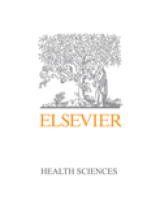New to this edition
- Three new chapters broaden your understanding of stroke intervention in the areas of Using Technology to Improve Limb Function, Managing Speech and Language Deficits after Stroke, and Parenting after Stroke.
- Learning activities and interactive references on a companion Evolve Resources website help you review textbook content and locate additional information.
Author Information
By Glen Gillen, EdD, OTR, FAOTA, Associate Director and Associate Professor, Rehabilitation and Regenerative Medicine (Occupational Therapy), Columbia University Medical Center, New York, New York
Part I: Foundations of Stroke Rehabilitation
1. Pathophysiology, Medical Management and Acute Rehabilitation of Stroke Survivors
2. Improving Participation and Quality of Life through Occupation
3. Task-Oriented Approach to Stroke Rehabilitation
4. Activity-Based Intervention in Stroke Rehabilitation
5. Client Centeredness: A Survivor's Perspective
Part 2: Maximizing Participation in Everyday Activities
6. Enhancing Performance of Activities of Daily Living
7. Activities of Daily Living Adaptations: Managing the Environment with One-Handed Techniques
8. Functional Mobility
9. Gait Awareness
10. Return to Work
11. Driving and Community Mobility as an Instrumental Activity of Daily Living
12. Parenting after Stroke
13. Sexual Function and Intimacy
14. Leisure Participation after Stroke
15. Caregivers and Caregiving
Part 3: Maximizing Outcomes for Specific Problem Areas Following Stroke
16. Psychological Aspects of Stroke Rehabilitation
17. Approaches to Motor Control Dysfunction: An Evidence-Based Review
18. Trunk Control: Supporting Functional Independence
19. Overview of Balance Impairments: Functional Implications
20. Vestibular Rehabilitation and Stroke
21. Upper Extremity Function and Management
22. Rehabilitation Technologies to Promote Upper Limb Recovery after Stroke
23. Edema Control
24. Splinting Applications
25. Managing Visual and Visuospatial Impairments to Optimize Function
26. Impact of Neurobehavioral Deficits on Activities of Daily Living
27. Treatment of Cognitive-Perceptual Deficits: A Function-Based Approach
28. Seating and Wheeled Mobility Prescription
29. Managing Speech and Language Deficits after Stroke
30. Dysphagia Management
31. Home Evaluation and Modifications
Electronic Chapters
32. How Therapists Think: Exploring Therapists’ Reasoning When Working with Patients Who Have Cognitive and Perceptual Problems Following Stroke
33. A Survivor’s Perspective II: Stroke


